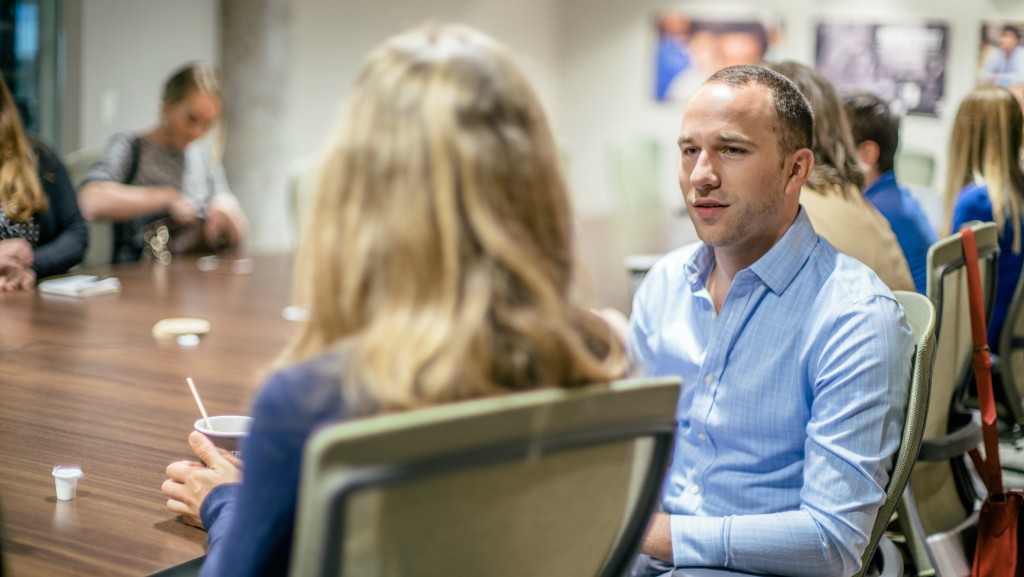
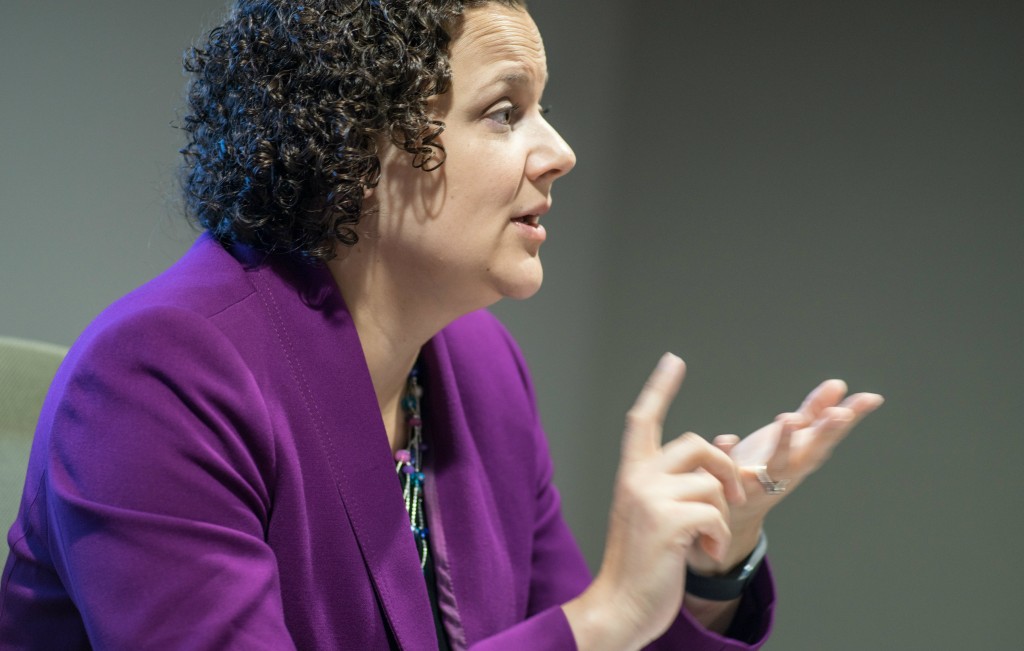
Words by Holly Harrison // Photos by Marie Ketring
The July 2015 edition of Breakfast of Champions started with Trista Harris, president of the Minnesota Council on Foundations, challenging the attendees to mix some personal into their professional while introducing themselves. As we went around the table saying our names and current job roles, everyone had to add what they want to be doing in twenty years.
“Sometimes we have these big, hairy, audacious goals that we don’t ever talk about,” Trista said after delivering her prompt. “But when you talk about those goals in places like this, then suddenly the twenty-year plan becomes the five-year plan.”
Trista knows the power of this exercise first hand. Read on for her story of staying on track to achieve her dreams, with help and kicks-in-the-butt from peers, mentors, and loved ones.
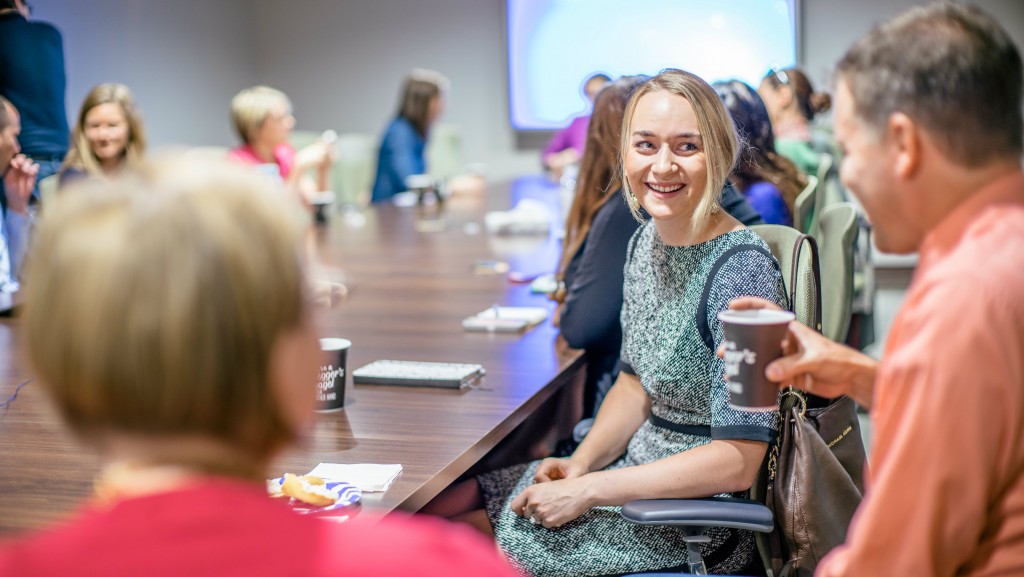
 Find a mentor.
Find a mentor.
On a conversation with her advisor at the Humphrey Institute, the late Bill Diaz:
“He asked, ‘What do you want to do in your long-term role?’ And I said, ‘I want to run a multi-service community center.’ And he was like, ‘Let me just stop you right there.’
“He said, ‘You are really intense, and if you work one place you’re gonna wear everybody out.’ Something the MCF staff can probably attest to. ‘If you’re constantly trying to fix things, it’ll irritate your staff because they don’t want things fixed. They want it to be the same. Nonprofits do need improvement, but it’s hard to do that from the inside. If you work at a foundation, you’ll be able to see the 20,000 foot view of the sector. You’ll see how these different organizations work together. You can help build their capacity. You’ll still drive them nuts, but it’ll be spread out, and you’ll be giving them money so they’ll put up with it.’
“He said, ‘It’s really really hard to get your first job in philanthropy, especially as a young person, especially as a person of color, so fundraise first. That way you know what it’s like to sit on the other side of the table. And as you’re fundraising, interview those foundations and figure out which one you’d like to work for. Who treats you respectfully? Who actually read your grant application? Who cares about the issues that you care about? That will help you figure out the one that’s the best fit.'”
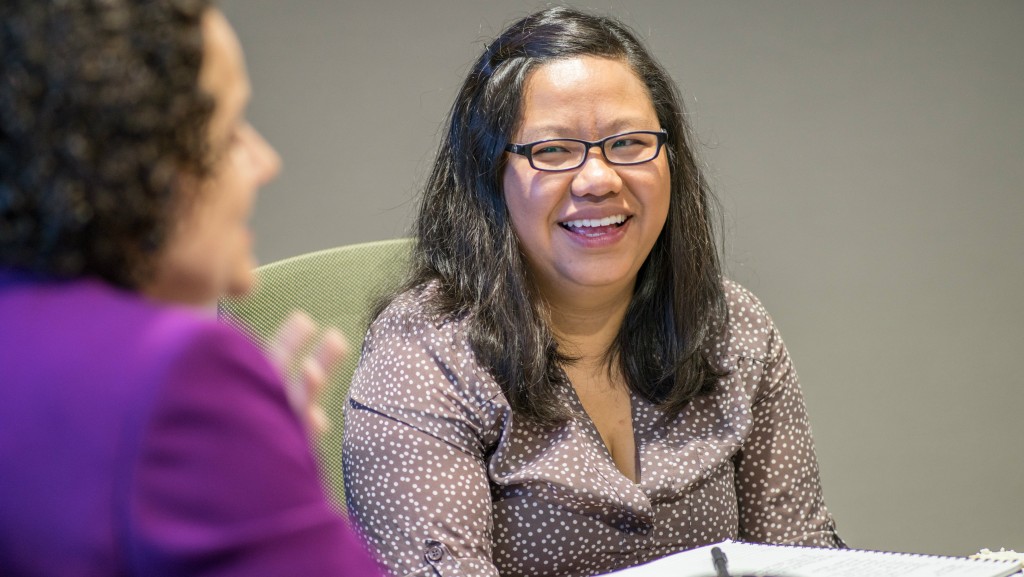
 Know how to get the interview.
Know how to get the interview.
“If you know anybody at an organization or connected to an organization that you’re applying to, on the cover letter say, ‘I talked to so-and-so from the board (or) so-and-so on the staff about this position. I’m really excited about applying for it.’ The HR person doesn’t want to cut out somebody that will get them in trouble, and so they let the hiring manager figure it out. And that first cut is the hardest cut by far.
“The other thing I started doing early in my career was taking my graduation year off my resume. Otherwise they’d read my resume and go, ‘Oh, well you don’t have real experience.’ So taking that off meant that they could be shocked when I showed up at the interview instead of pulling me out earlier in the process.”

 Know your worth.
Know your worth.
“There was a consultant who was looking for a contract grant writer, and because I was frustrated about my salary [at my full-time job at Girl Scouts], I was like ‘That would be really great to have a side hustle so that I could make some additional dollars.’
“He asked me what my rate was. So I figured out what my rate was at Girl Scouts and took out all the benefits and charged him that, which was awesome. And so for six months he was paying me, I don’t know, $16 or $20 an hour. Eventually he came back and said, ‘Y’know you should probably be charging me $75 an hour because I charge the clients $150 an hour for what you do.’ And I was like, ‘That would’ve been really great if you told me that six months ago!’
“But it was a great opportunity for me to realize that there was value in the work that you do outside the salary that the organization pays you. And as a result of that consulting work, one of his clients was hiring a director of development, and I had been doing all of their grant writing, and they really liked the way that I was doing that and so they hired me on to be their director of evaluation, communications, and fundraising.”

 Network outside to position yourself differently inside the workplace.
Network outside to position yourself differently inside the workplace.
“One of the things that I did my first week in the job at The Saint Paul Foundation was Google ‘how to be a program officer’—because that’s how you learn to do your job.
“I found Emerging Practitioners in Philanthropy (EPIP), an organization whose purpose is to support and strengthen the next generation of philanthropic leaders. I reached out to the executive director and said, ‘Hey, I just got this job. I’d love to connect with your Minnesota chapter.’ And he said, ‘Well, we don’t have one, but you should definitely start one.’ I told him I had one week of philanthropy experience, so that’s a terrible idea, but he said, ‘Everybody else is new too. It’s fine.’
“So I ended up starting Minnesota’s EPIP chapter, which was a great professional development experience because even if you can’t lead within your organization, volunteer opportunities like EPIP and YNPN give you this space where you get to decide what the agenda is. EPIP became the sort of place where young people within foundations were connected with each other in a way that senior leaders weren’t connected with each other. So when I would talk to more senior staff at my foundation, I would say, ‘Oh, did you know the Bush Foundation is working on a strategy that’s really aligned with ours? You should really talk to their president.’ Or when Warren Buffett gave a ton of money to the Gates Foundation the first time around, it was one of our EPIP discussion topics, and one of the board members asked about it during the board meeting. Our CEO was like, ‘I don’t know anything about that, but I think I heard Trista talking about it.’ She came to me and got more info and was able to share it with the board.”

 Stay real—on and off the job.
Stay real—on and off the job.
“I started blogging with my EPIP hat on. My first blog post said, ‘foundation staff, you’re not as smart, funny, or handsome (or pretty) as you think you are: you have access to money, and that’s why people treat you that way.’
“So the Chronicle of Philanthropy wrote about it and my boss, who for sure did not read blogs but read the Chronicle, was like, ‘What’s up with this?’ So I had to sit down with the communications director and we had a very long talk. She said, ‘You can do whatever you want outside work time. Don’t say you work here’—which I hadn’t, but if they just Googled they would figure out where I worked anyway—’and don’t say anything that you wouldn’t say in front of the board.’
“I said, ‘I would say that in front of the board.’ And she goes, ‘That’s why you don’t get to talk to the board.'”
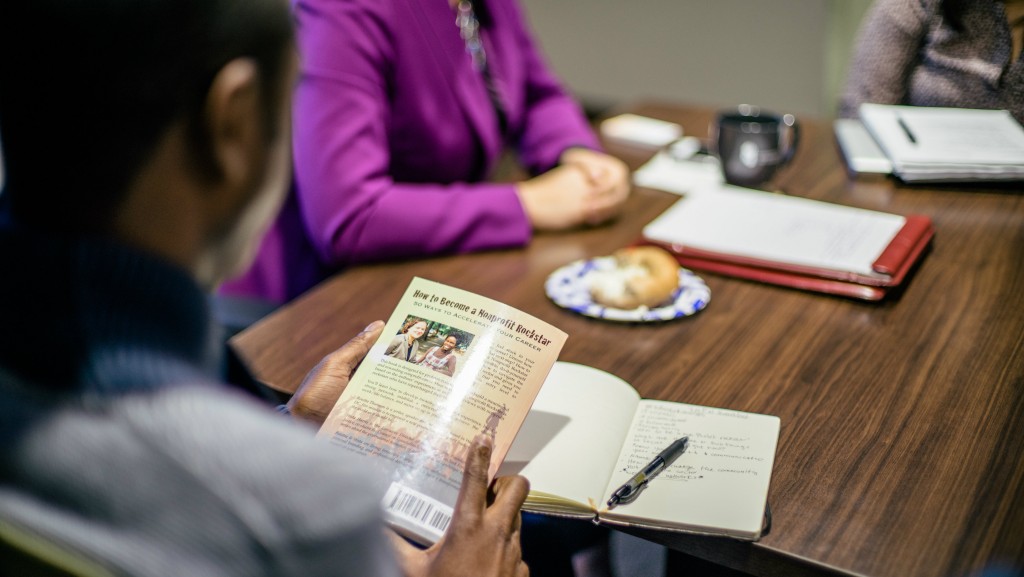
 Don’t wait until you’re “ready.”
Don’t wait until you’re “ready.”
“I knew that I wanted to run a foundation. I had been at The Saint Paul Foundation for three years when the executive director job at Headwaters Foundation for Justice opened up. I saw it and was like, ‘I’m for sure not qualified for that job.’ I think I’d just turned thirty, and I thought, ‘They’re never gonna hire me.’
“People in my EPIP network said, ‘You said you wanted to run a foundation. This is a great fit for your values.’ So I applied.
“Afterwards when I was had gotten the job and had talked through the decision making process with the board, they said Headwaters was founded thirty years prior by young donors in their twenties and thirties, and the organization needed a real reset. So as long as I could do what they needed, it didn’t matter how old I was.”
 Know when you’re wrong.
Know when you’re wrong.
“The recruiter called about the position at Minnesota Council on Foundations, and some people in my network called. But going from [Headwaters], a small, scrappy social justice foundation, to what is like the chamber of commerce for foundations—that felt like a bad idea.
“I met with the recruiter, and she said the board did a strategic plan, and they wanted all of the foundations to work together to create equity for the state of Minnesota. They wanted to start doing intensive public policy work. They wanted to be a strong voice for the sector.
“Then I met with the selection committee that was made up of board members, and their joke now is that I spent the whole time interviewing them instead of letting them interview me. It’s really great to be in a position where you’re considering something, but you love what you do. I would have been really happy staying at Headwaters for the next twenty years, and so to interview for a position in that place means that you really get to figure out if it’s the right thing for you without that constant worry of, ‘Oh my gosh, if I don’t say the right thing they might not hire me for this position.’
“After that conversation with the board, I realized the board wanted a fresh slate for the organization, and it was clear that the philanthropic community was ready for something very different from what they’d done in the past. It was a lever point for me, and I realized if MCF could change what 180 foundations do by just a little bit, it would have a huge impact in the community.”
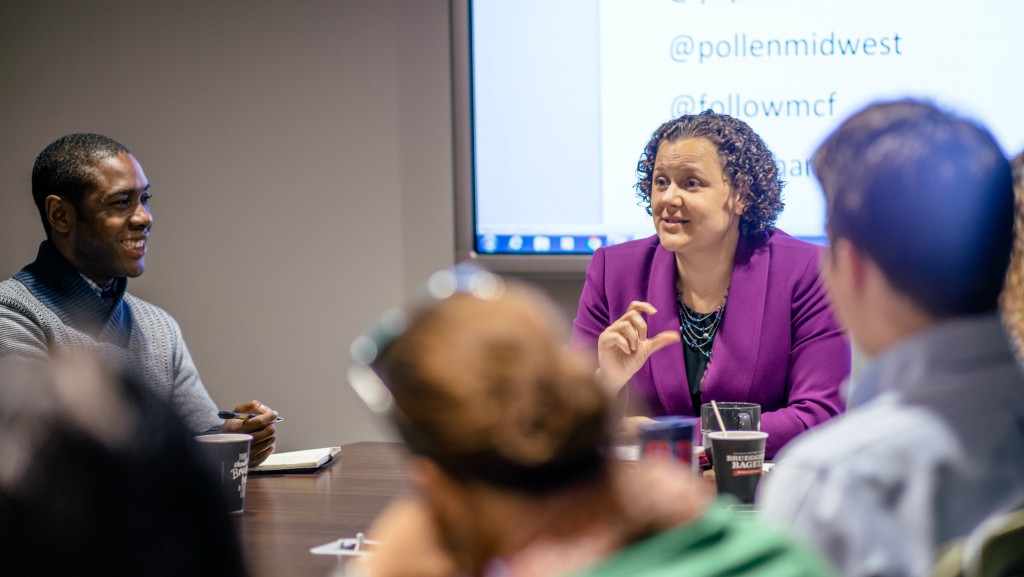
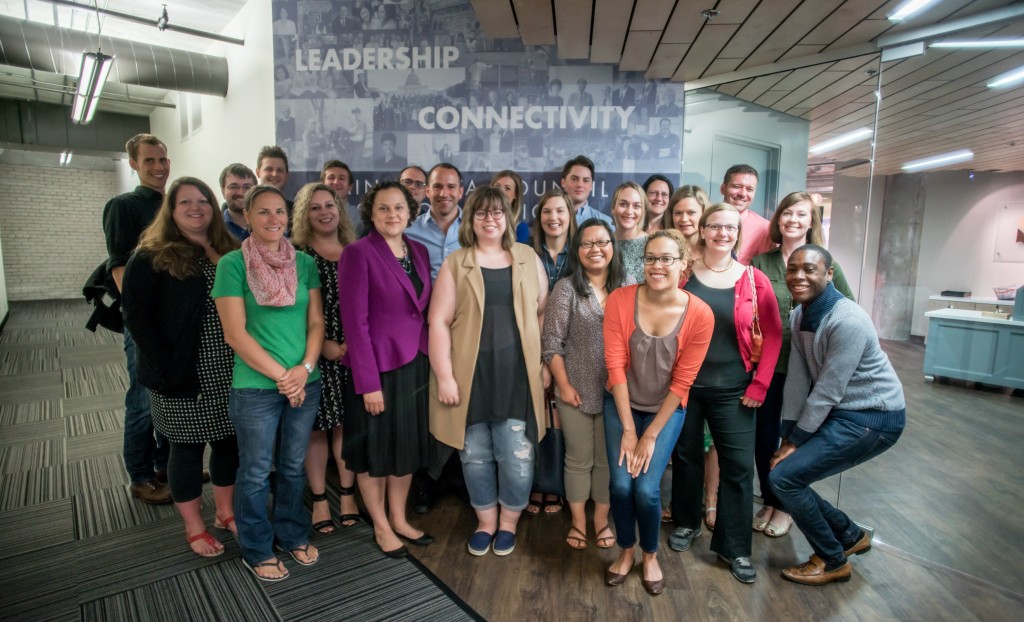
This piece is a summary of a conversation with Trista Harris, which took place at MCF on July 10, 2015, as part of Pollen and YNPN-TC’s joint Breakfast of Champions series. For more information, or to register for an upcoming event, check ynpntwincities.org.
